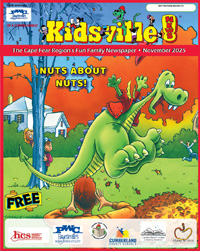
A sprinkle, I now know, is a small baby shower for a mother-to-be who already has at least one bundle of joy at home but who still needs a few little things for the new member of the family. This is especially true if the new arrival is a different gender than earlier kiddos.
I was, as far as I could discern, the oldest guest at the sprinkle. The honoree and her friends, most of whom were in some stage of pregnancy from undetectable to bursting at the seams, oohed and ahhed at all the sweet baby clothes and cuddly toys, and as the mother of three, the whole thing triggered all sorts of warm memories for me.
That said, the young mothers and mothers-to-be attending the sprinkle seemed at the time like a booming generational representation, but, in fact, it is my generation and those just behind me that are booming.
If life falls into 3 different stages — one’s individual childhood, the period when we have children, and when our children have children, it is the last group that is growing, not the first or second.
There are numbers to prove it.
According to the U.S. Census Bureau, the United States is joining the growing number of nations with significantly aging populations. Japan has the world’s oldest population with one out of every four people 65 or over, and some European nations, notably France, Spain, Germany and Italy, are fast heading in that direction.
Census data report that in 1900, a mere 4% of Americans were 65 or over. Currently, about 56 million Americans, or nearly 17% of us, are 65 or over, and projections are that we will reach the Japanese statistic of one in every four people by 2060.
High quality food coupled with a better understanding of nutrition as well as accessible health care have produced seniors who are healthy and active, with some on second or even third careers, playing tennis, and generally enjoying life in ways prior senior generations did not. We are living much longer than Americans of the past, with a life expectancy of around 76.
The babies coming to the mothers at the sprinkle can expect to reach 74 for the boys and 80 for girls. This is two decades longer than most Americans lived in the 1960s.
Clearly, old age is not what it used to be, but all this good news comes with bumps in the road. Younger working Americans are paying into Social Security for today’s pensioners, the same situation that pushed France to raise its retirement age from 62 to 64, causing riots in the streets.
Politicians, both Democrats and Republicans, are terrified to discuss this issue in public, but those chickens will come home to roost eventually.
In addition, not all seniors are healthy and playing tennis. Millions of us are in declining health with few options for care and profoundly lonely.
The precarious nature of old age is why Americans are concerned about the two geriatric frontrunners for President of the United States in 2024. Should we actually elect a leader staring down 80?
Old age is a concept, just like youth. It is also a fact. Just as we have begun to rethink what constitutes adulthood — is it age, physical size, or maturity of the human brain, we need to consider what constitutes old age.
The world is shifting around us, and it is time we figure out how to use all our human resources both appropriately and fairly.

 How to resolve AdBlock issue?
How to resolve AdBlock issue? 








